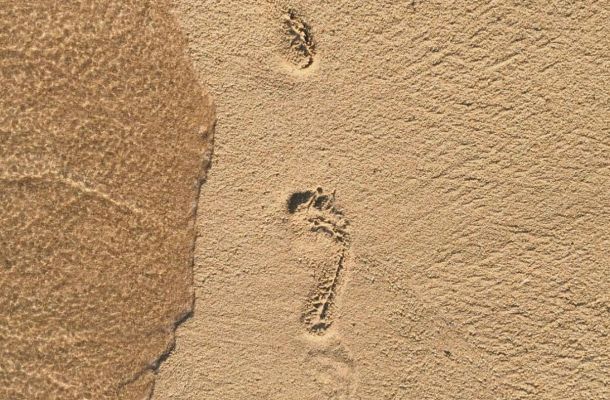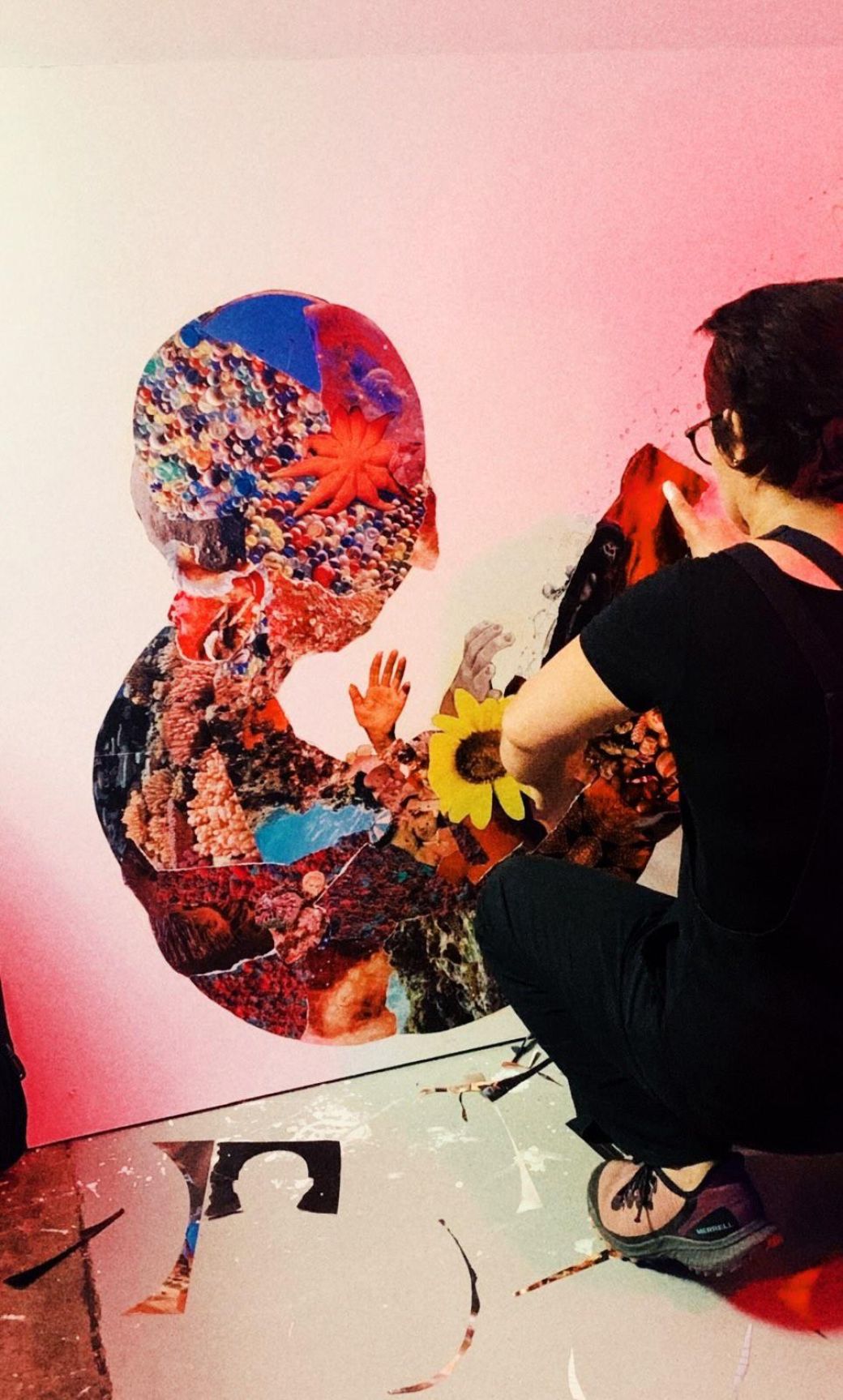
dialog: Serpil Odabaşı
Sometimes it is not possible to express what you have experienced with words. At that point, line, stain, and pattern come into play; they create a silent but powerful language.”
after showcasing her creations in apartıman, apart had a dialog with Serpil Odabaşı, who portrays those moments when even the words are not enough.
With a silent yet equally powerful language that she has acquired by filtering the coarse noise of the outside world, Serpil Odabaşı tells layered stories from fragments and answered apart’s questions — asked with almost a childlike curiosity — with complete sincerity.
In her own words: “With an effort to look more closely at what is considered flawed or incomplete, what is left aside, excluded, or unseen; the experience of migration, states of womanhood, personal fractures, collisions, and falls…”
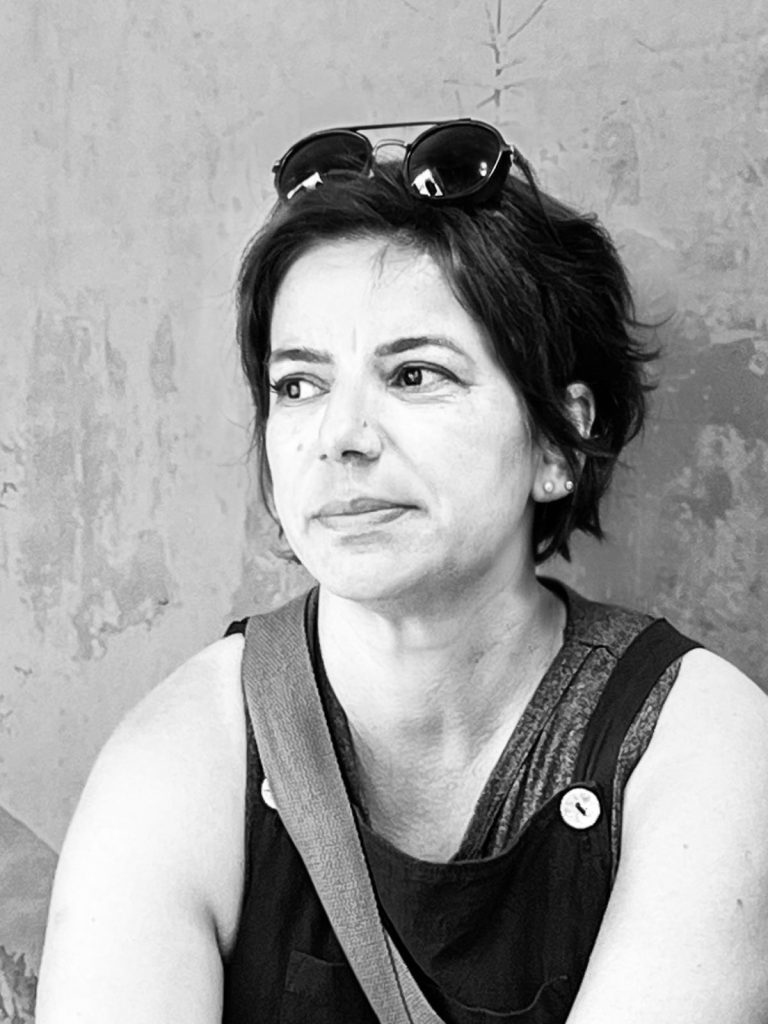
How did your journey with painting begin? How did you discover your talent?
Since childhood, I’ve always felt a strong pull toward paper, colors, and images. Rather than “discovering” my talent, I grew up with it. Especially during high school, this connection slowly turned into a conscious form of expression.
Painting has never been just a hobby for me. It’s a language through which my inner voice reaches the outer world. Where words fall silent, lines begin to speak, colors carry meaning. Over time, this language became my most natural way of understanding the world and expressing myself.
What usually inspires your creative process?
My inspiration often comes from personal and collective memory. I’ve always had the urge to look more closely at what is considered flawed, incomplete, or left on the margins. The excluded, the invisible, the experience of migration, womanhood, personal fractures, collisions, and falls…
Sometimes it’s impossible to express what you live through in words. That’s when line, stain, and texture step in, building a quiet but powerful language.
Sometimes it’s just a wave of restlessness, sometimes a single photograph, sometimes layers unconsciously piling up that trigger the process. Inspiration doesn’t have a fixed beginning; it seeps in like a slow leak, accumulating over time. I often feel as if I have endless energy for it—like I could create twelve hours a day if life allowed it. It’s always been that way, but life always finds its way in between.
Could you tell us a bit about your working method?
I combine both planned and intuitive ways of working, but intuition is always at the core. Some works quietly build up in my mind for weeks; others pour out onto the paper all at once. In those moments of overflow, control slips away from me—I simply become a channel. I love that state of flow; it’s the purest and most honest part of creation.
When working with collage and monoprint techniques, I build layer by layer. Each layer carries a fragment of memory—becoming visible and hidden at the same time. Conscious decisions and intuitive gestures intertwine in this process.
In your works, human and animal figures, as well as various materials, are intertwined. What are you trying to convey with this?
In my work, figures act as symbols. Whether human, animal, or object, each carries a memory or an emotion. Birds speak of freedom and fragility; deer often carry sorrow; stones shift in meaning depending on where I place them—sometimes they’re a burden, sometimes a form of attack.
In the human figures, it’s usually me — my body, my memory, my experiences become a kind of narrative space. These combinations are ways of telling a fragmented but still living story.
How do you interpret the role of education in an artist’s life?
Art education can open a door, but the real driving force is one’s own insistence on creating. The formal training I received at Gazi University gave me a technical backbone and discipline. But creativity was shaped over the years through my own experiences, breaking points, and places of resistance.
Education opens a door, yes — but walking through it is a deeply personal journey. Along this path, I’ve always struggled with imposed ways of seeing. I’ve fought a never-ending battle—sometimes outward, sometimes within—against the idea of “look from here.” When I said, “No, I won’t look from there,” I often found myself outside even the spaces where those like me were standing.
It’s partly my nature. I’ve always resisted both the explicit and subtle directions of what is presented as absolute truth—“we’ll go here, we’ll stand here, we’ll love this, we’ll reject that.” It’s not something I calculated carefully; it’s simply who I am.
Is there a work that left a deep mark on you or challenged you emotionally?
Yes, there are several. I can’t list them one by one, but there are works that left me still, that marked me deeply both during and after their creation. Some of these are collages I made in 2018; some go back even further.
Certain works are heavy not only technically but emotionally as well. Creating them feels like a confrontation—with myself and with the stories I carry.
Which art movement do you place your work in? Are there artists who inspire you?
My work doesn’t fit neatly into a single movement, but I feel close to avant-garde approaches. At times, it intersects with surrealism, feminist art, and the language of contemporary collage.
Artists who inspire me include Hannah Höch, Leonora Carrington, Käthe Kollwitz, Kara Walker, and Nancy Spero. Their courage to make the invisible visible has given me a lot in shaping my own language.
What does Serpil Odabaşı read—and what does she avoid reading?
I love reading poetry, contemporary art texts, and works on migration, memory, and body politics. I believe poetry has a quiet but powerful force. I tend to avoid texts that are overly commercial, shallow, or ideologically one-dimensional.
After migration, the pressure to read in English created a distance between me and novels—constantly pausing to look up words broke my focus. Even so, I enjoy reading philosophical and critical texts.
I follow translated articles on platforms like Terrabayt and Vesaire. I’m particularly drawn to the ideas of contemporary thinkers like Giorgio Agamben, Slavoj Žižek, Byung-Chul Han, and Achille Mbembe.
What does Serpil Odabaşı watch and avoid watching? What does she listen to—and not listen to?
I enjoy documentaries, independent films, and experimental works. Overly commercialized or soulless productions don’t resonate with me. I’m drawn to layered stories, complex characters, and films where silence becomes part of the narrative. Works like Parasite, The Lighthouse, and Wings of Desire are among those that inspire me.
My ear is wide open when it comes to music. I’m always curious about new sounds, but the old ones hold a special place for me. I can never stop listening to Mikis Theodorakis. Cem Karaca and Civan Haco are always part of the background of my life. In a single day, I might move from Kraftwerk to Sertab Erener or Hakan Yılmaz.
I love ambient, classical, electronic, and sometimes rock music. I generally avoid very high-tempo or aggressive genres.
Are you currently working on a project? What can your audience expect in the near future?
To be honest, I can’t fully predict myself. I keep creating and experimenting as much as life allows. The process often surprises me as well. I was thinking about a sound installation, but I’ve postponed it for now. This installation would have focused on the echoes of suppressed memory — the voices we can’t hear.
Even so, I carry a lot of energy and excitement within me. Art feels like an infinite playground. I’m also preparing projects for several grant applications. In my upcoming works, I will continue to build a language where silence takes shape and layers tell stories.
Thank you for visiting apart and sharing your time with us.
Thank you. Talking about art feels like part of the creative process for me. These conversations are one of the ways to make silent stories visible. 🖤
Diğer Yazılar
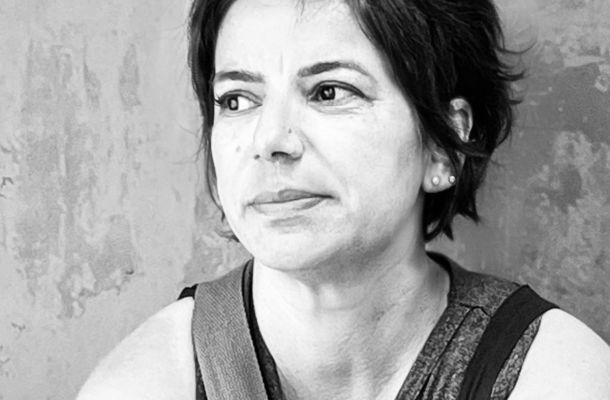
diyalog: Serpil Odabaşı
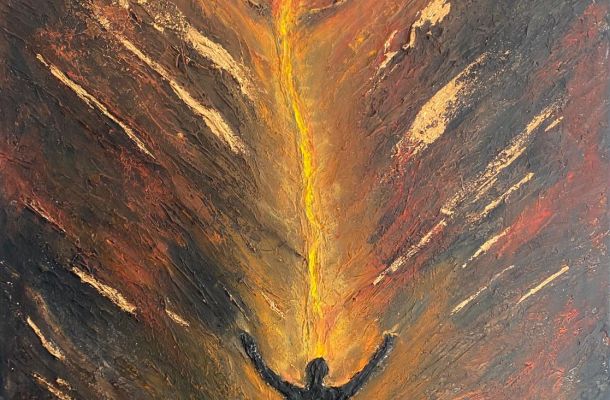
Şule Gürbüz’ün Kıyamet Emeklisi’nin “Aziz” İnsanı Üzerine
